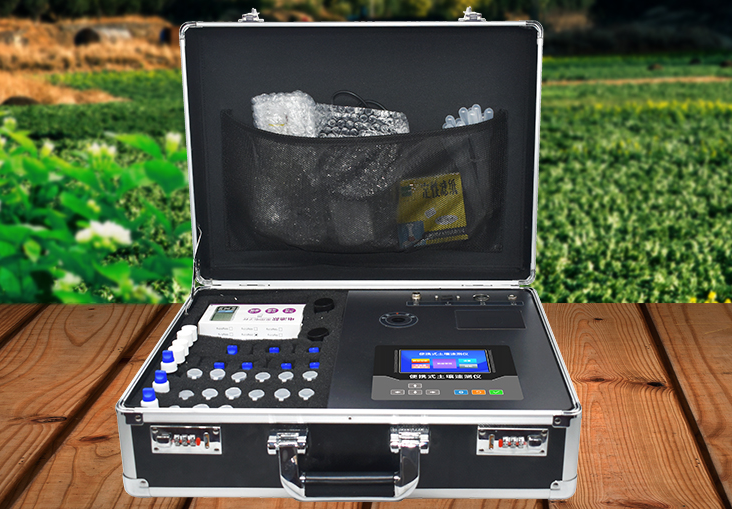Agriculture plays a vital role in feeding the growing global population. To maximize crop yields and optimize agricultural practices, it is essential to monitor and understand the soil conditions. Two critical parameters that significantly impact crop growth and productivity are soil temperature and humidity. In recent years, the advent of soil temperature and humidity sensors has revolutionized precision agriculture, allowing farmers to make data-driven decisions and improve crop yields. This article will delve into the importance of soil temperature and humidity, explain the role of sensors in monitoring these parameters, and highlight the various ways in which these sensors can enhance crop production.

Importance of Soil Temperature:
Soil temperature plays a fundamental role in seed germination, plant growth, and overall crop development. Different crops have specific temperature requirements for optimal growth, and deviations from these ideal ranges can lead to reduced yields or even crop failure. Soil temperature sensors provide real-time data on soil temperatures at various depths, enabling farmers to make informed decisions regarding planting schedules and crop selection. By monitoring soil temperature, farmers can ensure that seeds are planted when the soil is warm enough for germination, promoting uniform emergence and enhancing crop establishment.
Impact of Soil Temperature on Plant Physiology:
Soil temperature affects several physiological processes in plants, including nutrient uptake, root growth, and photosynthesis. By using soil temperature sensors, farmers can better understand how temperature impacts these processes and adjust their farming practices accordingly. For example, nutrient availability in the soil is greatly influenced by temperature, and sensors can help farmers optimize nutrient management programs based on temperature data. Additionally, sensors can assist in identifying potential risks such as cold stress or heat stress, allowing farmers to implement appropriate mitigation strategies to protect the crops.
Significance of Soil Humidity:
Soil humidity, or moisture content, is another crucial factor that directly affects crop growth and productivity. Insufficient soil moisture can lead to water stress, negatively impacting plant growth and yield. Conversely, excessive soil moisture can cause root rot and fungal diseases. Soil humidity sensors provide accurate and real-time data on soil moisture levels, allowing farmers to make informed decisions regarding irrigation schedules and water management practices. By ensuring optimal soil moisture conditions, farmers can promote healthy root development, nutrient uptake, and efficient water use by the crops.
Precision Irrigation Management:
One of the key benefits of soil humidity sensors is their ability to optimize irrigation management. By continuously monitoring soil moisture levels with sensors, farmers can determine when and how much water should be applied to the crops. This precision irrigation approach helps prevent over-irrigation, reducing water wastage and minimizing the risk of nutrient leaching. Additionally, sensors can assist in identifying localized variations in soil moisture, enabling targeted irrigation strategies and promoting uniform crop growth across the field.
Enhanced Nutrient Management:
Soil humidity sensors also play a crucial role in improving nutrient management practices. By accurately assessing soil moisture levels, farmers can optimize fertilizer application timing and rates. Sensors can help identify periods of high or low soil moisture, which affect nutrient availability and uptake by plants. This information allows farmers to adjust their fertilization schedules and ensure that nutrients are applied when plants can efficiently utilize them. As a result, nutrient losses are minimized, and crops receive the necessary nutrients for optimal growth, leading to improved yields and crop quality.
Integration of Sensor Data and Decision Support Systems:
To fully leverage the potential of soil temperature and humidity sensors, integrating sensor data into decision support systems is crucial. These systems combine sensor data with other environmental factors such as weather forecasts, historical data, and crop-specific information. By utilizing advanced algorithms and models, decision support systems can provide farmers with real-time recommendations on irrigation scheduling, fertilizer application, and pest control measures. This integration empowers farmers to make precise, data-driven decisions, further optimizing crop yields and resource efficiency.
Case Studies and Success Stories:
Numerous case studies have demonstrated the positive impact of soil temperature and humidity sensors on crop yields. For instance, in a study conducted on a vineyard, the use of soil temperature sensors allowed the farmer to optimize irrigation and protect the vines from frost damage, resulting in increased yields and improved grape quality. Similarly, in precision vegetable farming, soil humidity sensors enabled farmers to implement targeted irrigation strategies, leading to better water-use efficiency and significantly higher crop yields.
Future Perspectives and Conclusion:
As technology continues to advance, soil temperature and humidity sensors are becoming more affordable, accurate, and user-friendly. The future of precision agriculture lies in the widespread adoption of these sensors, coupled with advanced data analytics and artificial intelligence. By harnessing the power of soil temperature and humidity data, farmers can continue to improve their crop yields, minimize resource wastage, and contribute to sustainable agricultural practices.

In conclusion
soil temperature and humidity sensors have revolutionized precision agriculture by providing real-time, accurate data on soil conditions. These sensors enable farmers to optimize their irrigation management, enhance nutrient utilization, and make informed decisions based on precise environmental data. By leveraging the valuable insights provided by soil temperature and humidity sensors, farmers can achieve higher crop yields, reduce environmental impacts, and contribute to the sustainable and efficient future of agriculture.